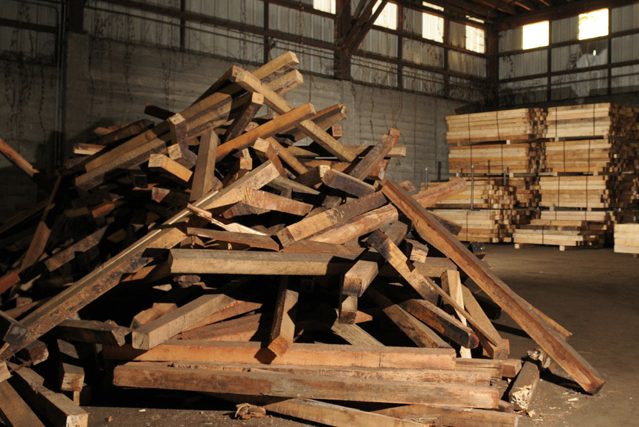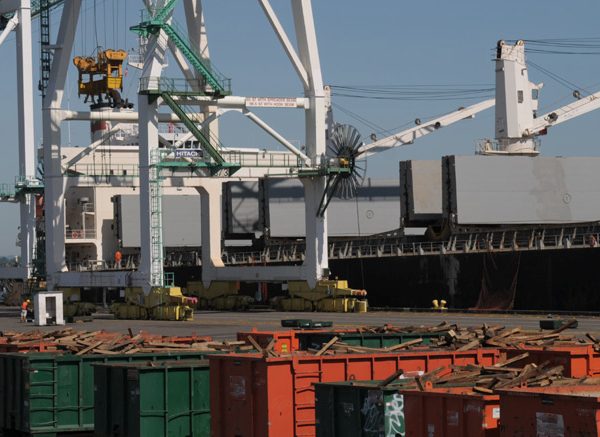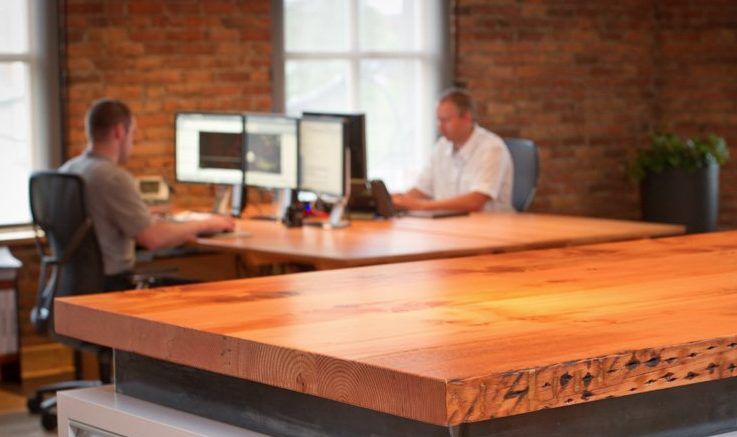The Reclaimed Wood Process
Our eco-friendly interior designers are excited to share a guest post from Viridian Reclaimed Wood – a reclaimed wood flooring, paneling and furniture salvaging company based and operated in Portland, Oregon.
Reclaimed wood is hot in the green building industry and more people are using it in their homes and offices. You can use reclaimed wood for upgrades, remodels and new building projects.
What is Reclaimed Wood? Simply put, reclaimed wood is lumber that’s given a new life. Think of it as salvaged or recycled wood. The amazing thing about reclaimed wood is that it’s generally harder and more durable than virgin wood from newly cut trees. By choosing this material, you can help divert perfectly usable material from the nation’s landfills. Plus, making an item from salvaged lumber, like reclaimed wood flooring, uses less energy than making the same item out of virgin wood.
The Top Sources of Reclaimed Wood
Deconstructed buildings. Remember that old barn overgrown with foliage you saw during a drive through the country? It has the potential to become reclaimed wood along with other buildings that are no longer used, like old houses, warehouses and even water tanks.
Discarded shipping and crating material. It’s common for shipping companies to discard crating and shipping materials made from beautiful European and Asian hardwood species that are ultra-durable. By choosing to use salvaged lumber, you can have exotic wood in your home or office without the eco-guilt.
Old-growth stumps. Modern manufacturers have figured out how to remove large, pioneer-era stumps (often referred to as buckskins) to turn them into beautiful reclaimed wood flooring.
Wine casks. When vintners no longer need their redwood wine casks, the life of the lumber doesn’t have to end. Instead, incorporate the rosy-toned timber into your project.
School gyms. Schools often use hardwoods like glulam and Douglas fir for their floors and bleachers. When the gym gets a facelift, the possibilities for the hundreds of feet of salvaged wood are endless.
Reclaimed Wood’s Lifecycle. Typically, after a company sources high-quality timber that’s no longer needed, it salvages the wood and separates it into different piles: high-grade, mid-grade and low-grade lumber. The low-grade lumber becomes firewood or bio-fuel, while the mid-grade wood is made into utility-grade products, like shipping pallets. During the sorting process, workers take the time to make sure that everything that’s recyclable—metal, plastic and nylon—ends up in the recycling bin and not the dumpster.
The high-grade salvaged wood gets dried in a kiln, which stabilizes the lumber and also assures there are not bugs or fungi. After the drying process, the wood is milled to reveal its inner beauty and original characteristics. The milled lumber then gets packaged and shipped to home and business owners who seek a green solution to their décor needs.
How to Incorporate Reclaimed Wood into Your Home or Office. For the most part, if you can make something with virgin wood, you can also build it with reclaimed wood. Here are some ideas about how to incorporate salvaged lumber in your home: Reclaimed wood flooring, veneer paneling on walls, desks or cabinets, decking, tabletops, countertops, shelves, casework, doors.
Using reclaimed wood is a unique and creative way to bring beauty and function into your home or office. Talk to a remodeler or reclaimed lumber retailer to learn more about its benefits and uses.



